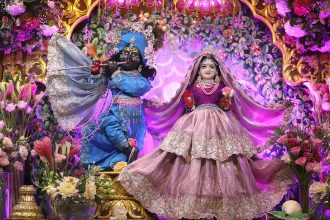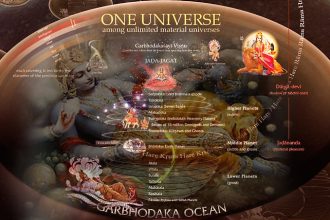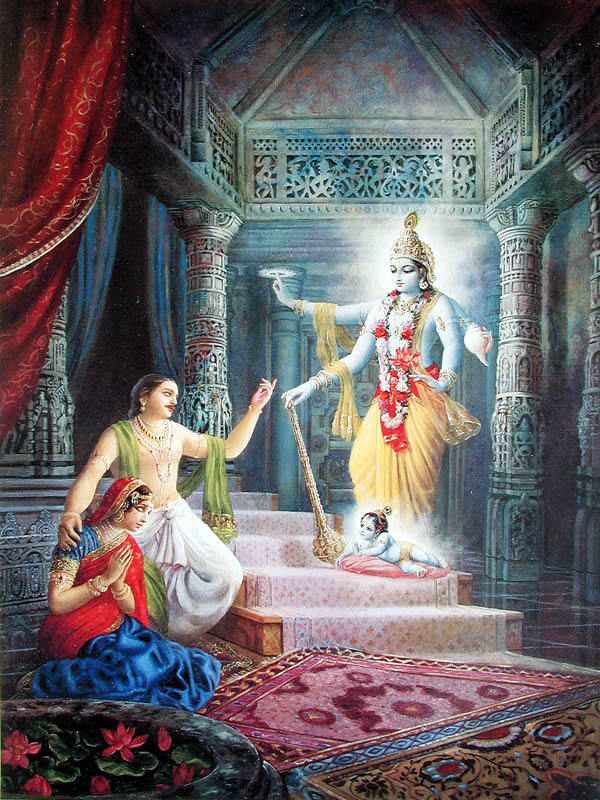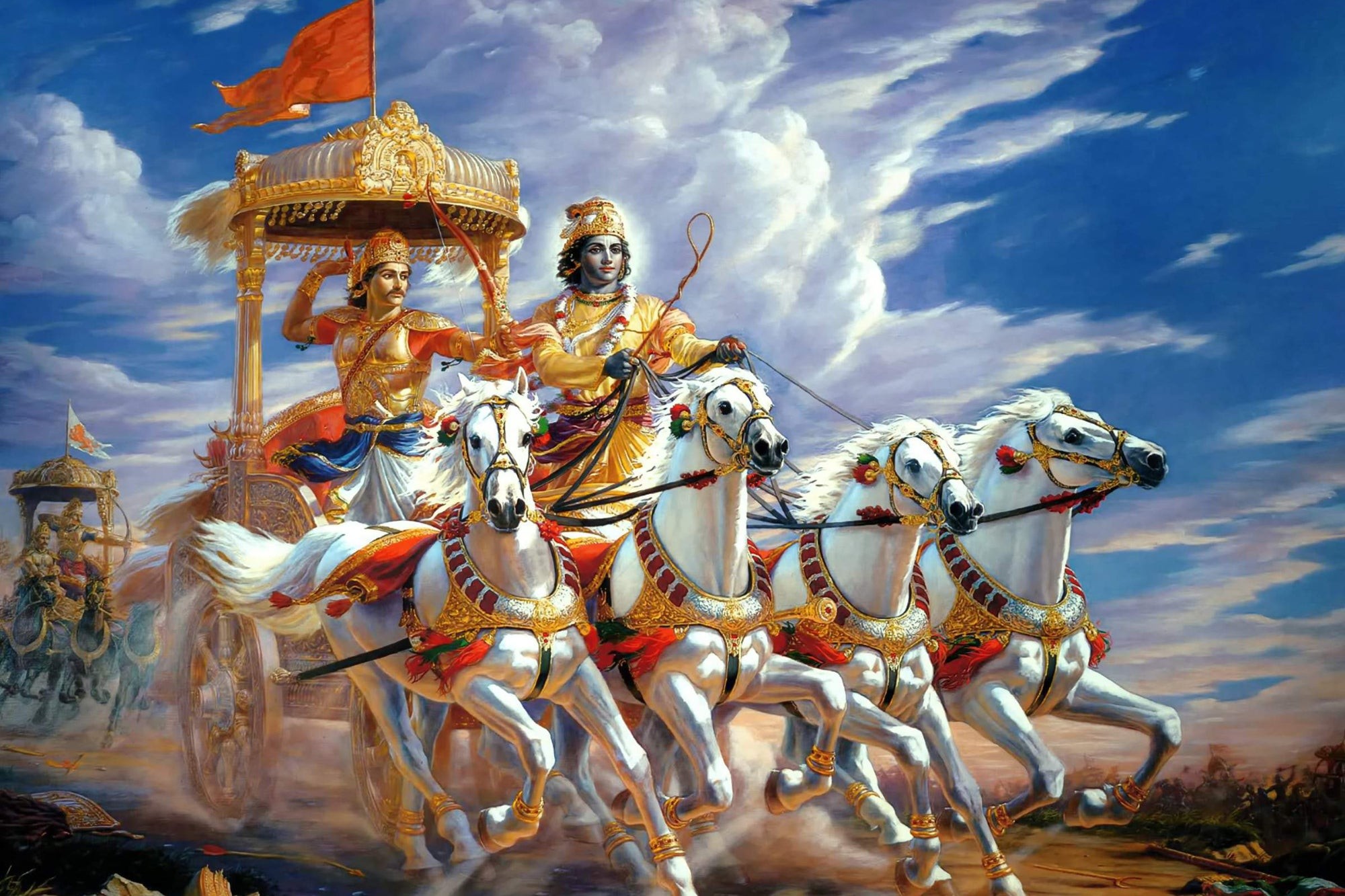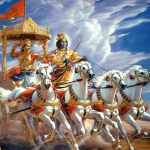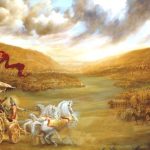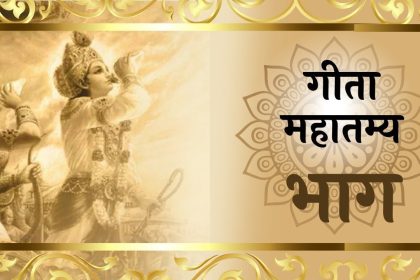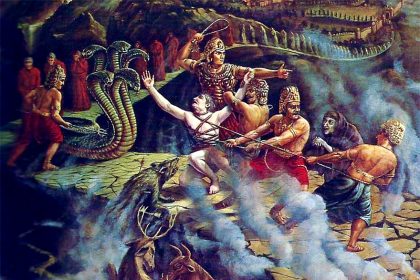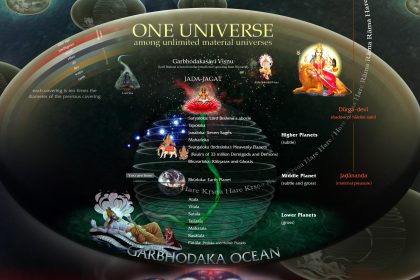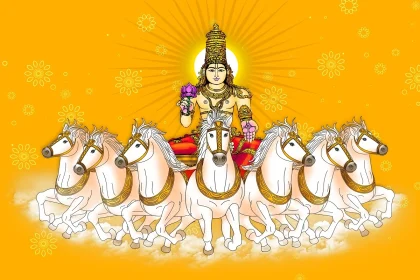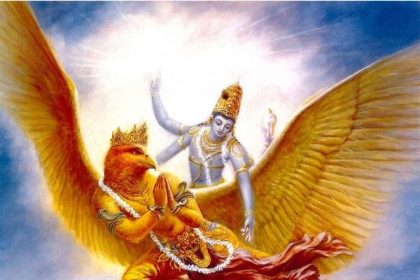Sanatana-Dharma
That destination is called the sanātana sky, the eternal, spiritual sky. In this material world we find that everything is temporary. It comes into being, stays for some time, produces some by-products, dwindles and then vanishes. That is the law of the material world, whether we use as an example this body, or a piece of fruit or anything. But beyond this temporary world there is another world of which we have information. That world consists of another nature, which is sanātana, eternal. Jīva is also described as sanātana, eternal, and the Lord is also described as sanātana in the Eleventh Chapter. We have an intimate relationship with the Lord, and because we are all qualitatively one—the sanātana-dhāma, or sky, the sanātana Supreme Personality and the sanātana living entities—the whole purpose of Bhagavad-gītā is to revive our sanātana occupation, or sanātana-dharma, which is the eternal occupation of the living entity. We are temporarily engaged in different activities, but all of these activities can be purified when we give up all these temporary activities and take up the activities which are prescribed by the Supreme Lord. That is called our pure life.
The Supreme Lord and His transcendental abode are both sanātana, as are the living entities, and the combined association of the Supreme Lord and the living entities in the sanātana abode is the perfection of human life. The Lord is very kind to the living entities because they are His sons. Lord Kṛṣṇa declares in Bhagavad-gītā, sarva-yoniṣu. .. ahaṁ bīja-pradaḥ pitā: “I am the father of all.” Of course there are all types of living entities according to their various karmas, but here the Lord claims that He is the father of all of them. Therefore the Lord descends to reclaim all of these fallen, conditioned souls, to call them back to the sanātana eternal sky so that the sanātana living entities may regain their eternal sanātana positions in eternal association with the Lord. The Lord comes Himself in different incarnations, or He sends His confidential servants as sons or His associates or ācāryas to reclaim the conditioned souls.
Therefore, sanātana-dharma does not refer to any sectarian process of religion. It is the eternal function of the eternal living entities in relationship with the eternal Supreme Lord. Sanātana-dharma refers, as stated previously, to the eternal occupation of the living entity. Śrīpāda Rāmānujācārya has explained the word sanātana as “that which has neither beginning nor end,” so when we speak of sanātana-dharma, we must take it for granted on the authority of Śrīpāda Rāmānujācārya that it has neither beginning nor end.
The English world religion is a little different from sanātana-dharma. Religion conveys the idea of faith, and faith may change. One may have faith in a particular process, and he may change this faith and adopt another, but sanātana-dharma refers to that activity which cannot be changed. For instance, liquidity cannot be taken from water, nor can heat be taken from fire. Similarly, the eternal function of the eternal living entity cannot be taken from the living entity. Sanātana-dharma is eternally integral with the living entity. When we speak of sanātana-dharma, therefore, we must take it for granted on the authority of Śrīpāda Rāmānujācārya that it has neither beginning nor end. That which has neither end nor beginning must not be sectarian, for it cannot be limited by any boundaries. Those belonging to some sectarian faith will wrongly consider that sanātana-dharma is also sectarian, but if we go deeply into the matter and consider it in the light of modern science, it is possible for us to see that sanātana-dharma is the business of all the people of the world—nay, of all the living entities of the universe.
Non-sanātana religious faith may have some beginning in the annals of human history, but there is no beginning to the history of sanātana-dharma, because it remains eternally with the living entities. Insofar as the living entities are concerned, the authoritative śāstras state that the living entity has neither birth nor death. In the Gītā it is stated that the living entity is never born and he never dies. He is eternal and indestructible, and he continues to live after the destruction of his temporary material body. In reference to the concept of sanātana-dharma, we must try to understand the concept of religion from the Sanskrit root meaning of the word. Dharma refers to that which is constantly existing with a particular object. We conclude that there is heat and light along with the fire; without heat and light, there is no meaning to the word fire. Similarly, we must discover the essential part of the living being, that part which is his constant companion. That constant companion is his eternal quality, and that eternal quality is his eternal religion.



